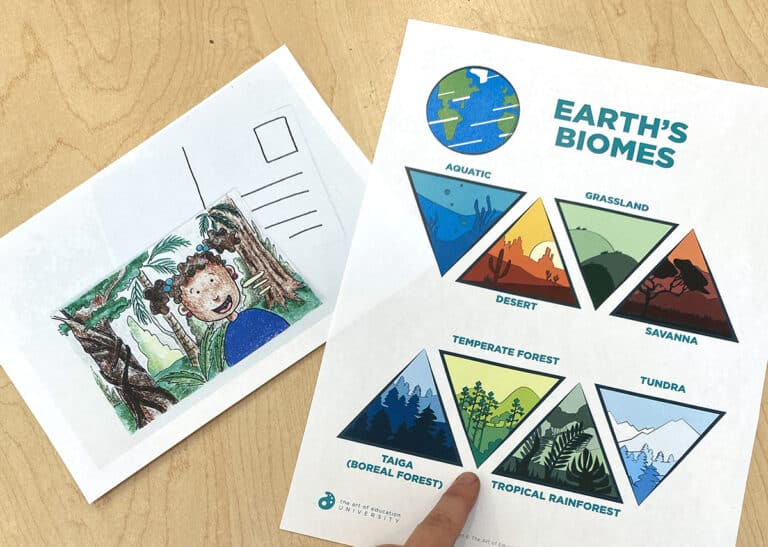
The STEAM movement has been both an asset and a detriment to art education. Although the movement has helped people see the benefits of art ed, there are drawbacks. Sometimes art is partnered with these other disciplines as fluff to fill in the cracks. In those cases, true STEAM education isn’t happening.
In its best form, STEAM education allows students to have authentic, collaborative experiences while maintaining equilibrium between subjects. STEAM should be an equalizer.
In fact, art can be more than the just an addition to STEM. Art can become the leading discipline in a field of technology-ridden, left-brain concepts. As Cassidy stated in the AOE LIVE Episode, A Blueprint for STEAM Education, “Art becomes the glue that holds the other subjects together.”
Take school-wide initiatives for example. STEAM education is the perfect fit for something like an in-depth legacy project. When teachers blend STEAM subjects thoughtfully, art takes on a high level of substance and value.
Last spring, students at my middle school completed a phenomenal long-term collaborative STEAM project. Students worked with teachers from the STEAM PLC to complete a large, periodic table sculpture. Over 700 students had a hand in its creation.

We involved students in all parts of the process. Students researched table elements, selected materials, and designed the elements in Adobe Illustrator. Students even ran the laser engraver that etched each tile.

We assembled each element into a relief sculpture, which will hang in our media center this fall. To finish the project, a muralist will work with students to create a painting to go with the sculpture. The plan is to incorporate themes from our school and local community.
Last school year, students had a chance to vote on three design proposals from the muralist. Below is part of one of the muralist’s proposals.

Our school board invited the STEAM PLC to showcase our students’ work at the school board meeting last May. The way we blended STEM subjects with Art astonished the board members. It was clear they saw the value in quality integration.
When students take part in projects with genuine STEAM connections, they see that art can be a true connector and equalizer. Throughout these processes, students, staff, and community members experience authentic art appreciation. That appreciation leads to an army of advocates for art’s continuous presence in today’s schools.
What STEAM projects have you done with your students?
How do you authentically blend STEAM subjects?
Magazine articles and podcasts are opinions of professional education contributors and do not necessarily represent the position of the Art of Education University (AOEU) or its academic offerings. Contributors use terms in the way they are most often talked about in the scope of their educational experiences.




